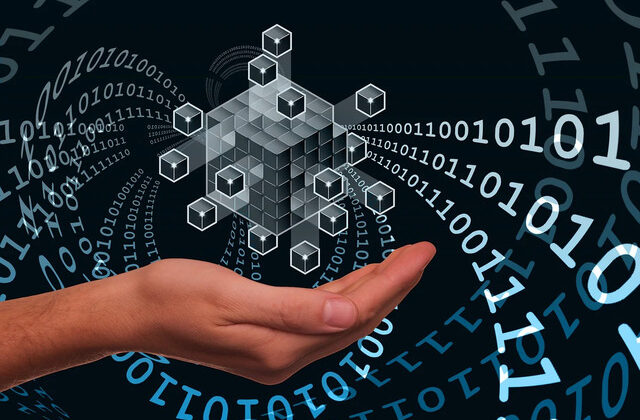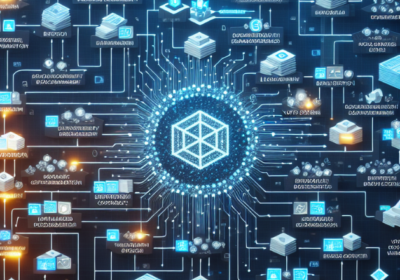What is the Role of Miners in a Blockchain Network?
What is the Role of Miners in a Blockchain Network: Blockchain technology has gained global attention in recent years, with its promise to revolutionize industries from finance to healthcare.
At the heart of this groundbreaking technology lies a key component that often goes unnoticed: **miners**.
These individuals or entities are essential to the proper functioning and security of blockchain networks.
But what exactly do miners do, and why are they so important?
This article will provide a detailed look at the role of miners in a blockchain network.
And how they contribute to the security and decentralization of the system, and why their function is crucial to the entire ecosystem.

1. Understanding Blockchain Technology
Before diving into the role of miners, it’s important to have a foundational understanding of **blockchain technology**.
A blockchain is essentially a decentralized digital ledger that records transactions across multiple computers in a network.
The transactions are grouped together in blocks, which are then linked to each other in a linear, chronological order—forming a chain.
One of the core features of blockchain is its **decentralization**.
Unlike traditional financial systems, which rely on central authorities like banks or governments, blockchain operates without any central governing body.
Instead, it relies on the collective participation of network nodes, and miners are among the most critical nodes in this ecosystem.
They help maintain the security, transparency, and immutability of the blockchain.
2. What is the Role of Miners in a Blockchain Network?
Now, let’s address the central question: What is the role of miners in a blockchain network?
Miners play a crucial part in validating transactions and securing the blockchain. Here’s how they contribute to the system:
1. Transaction Validation: Every time someone initiates a transaction on a blockchain, it needs to be validated. This is where miners step in.
They collect multiple transactions, validate them, and bundle them into a new block.
2. Block Creation: Once miners have gathered enough valid transactions, they work on adding a new block to the blockchain.
This process involves solving complex mathematical problems, a process known as “proof-of-work” (in the case of Bitcoin and many other blockchains).
3. Network Security: Miners help secure the blockchain by ensuring that only valid transactions are added to the ledger.
They prevent **double-spending**, where a user might attempt to use the same digital currency more than once, and protect the network from fraudulent attacks.
4. Consensus Mechanism: Miners are integral to the **consensus mechanism** used in many blockchain networks.
For example, Bitcoin’s proof-of-work system requires miners to compete to solve mathematical puzzles, and the first one to solve it gets to add the block to the chain.
This ensures that all network participants agree on the current state of the blockchain.
By performing these functions, miners ensure the integrity of the blockchain. Without them, the entire network could be compromised, leading to security vulnerabilities and transactional failures.

3. Mining Process: How Do Miners Secure the Blockchain?
The process of mining involves a combination of computational power, cryptography, and economic incentives.
Let’s break down the steps of the mining process to understand better what happens behind the scenes.
1. **Transaction Pool:** Transactions are broadcasted to the blockchain network, where they await validation. Miners select pending transactions from this pool.
2. **Block Formation:** Miners bundle several transactions into a block. A block usually contains hundreds of transactions, depending on the blockchain network.
3. **Proof-of-Work:** The core of the mining process is solving a cryptographic puzzle.
The puzzle, known as proof-of-work, requires significant computational resources to solve. Miners compete to find the solution first.
4. **Block Validation:** Once a miner solves the puzzle, they broadcast the newly formed block to the network.
Other nodes in the network verify the validity of the block. If it’s deemed valid, it gets added to the blockchain.
5. **Reward:** Miners are incentivized to perform this work by receiving a reward, typically in the form of cryptocurrency.
In Bitcoin, for instance, the reward is a combination of newly minted Bitcoin and transaction fees collected from the transactions within the block.
This mining process not only keeps the blockchain running smoothly but also maintains the **decentralization** and security of the network.
Without miners, there would be no mechanism to keep transactions secure and legitimate.
4. The Role of Miners in Different Consensus Mechanisms
While the proof-of-work system is the most well-known mining mechanism, not all blockchains rely on it.
Different blockchains utilize various consensus mechanisms, each of which assigns a slightly different role to miners (or their equivalents).
– Proof-of-Stake (PoS): In a PoS system, validators are chosen based on the number of coins they hold and are willing to “stake” as collateral.
Instead of miners competing to solve complex puzzles, these validators are chosen randomly, and the amount they have staked determines their chances of being selected.
While the traditional role of miners changes in PoS, their equivalent—validators—still play an essential role in securing the network.
– Delegated Proof-of-Stake (DPoS): In this system, users vote to elect a small group of delegates who validate transactions and secure the network.
Though mining is absent in its traditional sense, the function of ensuring network integrity and processing transactions remains essential.
– Proof-of-Authority (PoA): This consensus mechanism relies on a set of approved nodes to validate transactions.
These nodes are typically highly trusted within the network.
Mining, as seen in proof-of-work systems, is replaced by a small group of authoritative nodes responsible for maintaining the blockchain.
Despite the differences in these mechanisms, the essential function remains the same: ensuring **blockchain security** and validating transactions.
Whether through mining or staking, these processes prevent malicious actors from corrupting the ledger.
5. The Economic Incentive for Miners
One of the reasons blockchain networks function so efficiently is due to the economic incentives provided to miners.
Without rewards, it would be challenging to motivate miners to use their computational resources and energy to secure the network.
Let’s explore some key incentives for miners:
– Block Rewards: In proof-of-work systems like Bitcoin, miners receive newly minted cryptocurrency as a reward for adding a valid block to the blockchain.
This is known as the block reward.
– Transaction Fees: In addition to the block reward, miners also earn **transaction fees** from the transactions included in their block.
As block rewards decrease over time (such as Bitcoin’s halving event), transaction fees become increasingly important for miners’ revenue.
– Incentives for Network Security: Miners are incentivized to act in the best interest of the network because acting maliciously can lead to economic losses.
For instance, in proof-of-stake systems, validators risk losing their staked cryptocurrency if they attempt to attack the network.
These financial rewards ensure that the blockchain remains secure and operational, as miners are constantly motivated to maintain and improve the network’s efficiency.
6. Challenges and Future of Mining in Blockchain Networks
While mining plays an indispensable role in blockchain networks today, it does face several challenges. One of the most significant issues is the **environmental impact**.
Proof-of-work mining, in particular, requires vast amounts of computational power, leading to high energy consumption.
This has raised concerns about the long-term sustainability of such mining methods.
Additionally, as blockchain networks grow, the difficulty of mining increases, which could lead to centralization.
Large mining farms with powerful hardware dominate the market, creating concerns that the network’s decentralization could be compromised.
On the other hand, **innovation is underway**. Proof-of-stake and other less energy-intensive consensus mechanisms are being explored to tackle these challenges.
Ethereum, one of the largest blockchain networks, recently transitioned from proof-of-work to proof-of-stake, significantly reducing its energy consumption and paving the way for a more sustainable future.
What is the Role of Miners in a Blockchain Network Conclusion
What is the Role of Miners in a Blockchain Network: the role of miners in a blockchain network is indispensable.
They are the backbone of the system, ensuring the validation of transactions, the security of the network, and the maintenance of decentralization.
Whether through proof-of-work, proof-of-stake, or other consensus mechanisms, miners (or their equivalents) help to uphold the integrity and functionality of the blockchain.
As blockchain technology continues to evolve, so too will the role of miners, but their core function—ensuring trust and security in a decentralized system—will remain a fundamental aspect of any blockchain network.
Understanding **what is the role of miners in a blockchain network** gives us a clearer picture of how these systems operate, and how they provide a trustless, decentralized solution to many of the problems faced by traditional financial and data systems.
As blockchain continues to grow, so will the importance of miners and their contribution to the future of technology.






